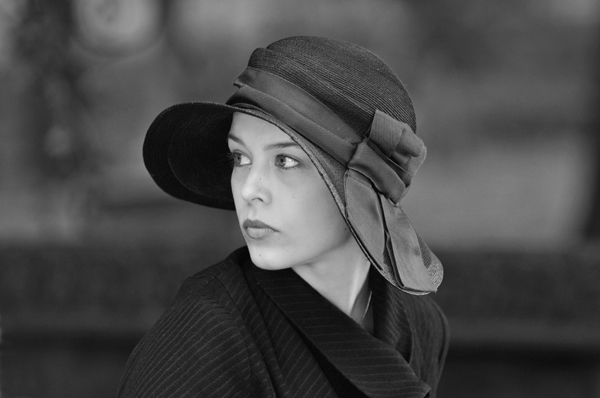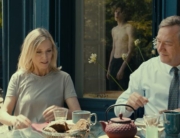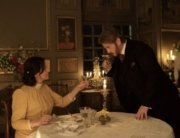At the centennial of “The Great War” aka “The War to End All Wars,” Francois Ozon sensitively probes how its damaged survivors could become trapped in strategies to deal with overwhelming grief—and guilt. Perhaps unexpectedly for a French director, Frantz focuses on the losing side. Though elegiac in mostly black-and-white, the film has surprising resonance today, in a time of constant wars and rising nationalism.
The opening scenes in 1919 are haunted by death. In the small German town of Quedlinburg, a young woman in a long black dress, Anna (Paula Beer, in her first major role), makes regular pilgrimages to the cemetery to freshen the flowers at the grave of her fiancé Frantz, one of the 11 million soldiers killed. She dutifully returns to the house of his parents, Dr. Hans Hoffmeister (Ernest Stötzner) and Magda (Marie Gruber), who maintain their own shrine to Frantz. They have taken her in like the daughter-in-law she almost was, and she calls them her parents.
However, a mysterious Frenchman disturbs their daily routine. Flowers appear on Frantz’s grave. The caretaker sneers that “some foreigner” brought them, and Anna sees the foreigner, yet again, at the cemetery. The thin, pallid stranger, Adrien (Pierre Niney), pays the family a call and tearfully reveals he knew Frantz in Paris. The Hoffmeisters and Anna assume Adrien and Frantz were students there together before the war, and they open their home to Adrien—with some shades of The Return of Martin Guerre—and ply him with questions. In hesitant German, he dramatically details his and Frantz’s visits to the Louvre, where they went especially to see a certain Manet painting. In Frantz’s bedroom-turned-memorial, Adrien opens a violin case and tries out the violin. The doctor, warming up to him, corrects his arm positions—just like he used to do with Frantz.
Sequences of Anna and the not-as-sad young Frenchman walking in the countryside or reciting Frantz’s favorite French poem by Verlaine blossom into color, and she accepts his invitation to a village dance, where they hesitantly waltz together and Anna can actually feel that “The war is over.” But not quite for Adrien; before he leaves town, he writes her a letter revealing how he really met Frantz, completely contradicting what he earlier told Anna and Frantz’s parents.
Anna goes through a whirlwind of conflicting emotions about Frantz (her childhood sweetheart), her continuing to shield her substitute parents from the truth, and her new feelings for Adrien. She consults a priest, who recommends forgiveness. By the time she brings herself to write to Adrien, his address is no longer valid, and she determines to find him in France (a plot twist neither in the original 1925 Maurice Rostand play nor Ernst Lubitsch’s 1931 adaptation, Broken Lullaby).
Ozon, in his first period drama since Angel (2007), stylistically looks like he’s made an answer film to Michael Haneke’s social-roots-of-Nazism in The White Ribbon (2009) by depicting the nationalist feelings rising among Anna’s neighbors, represented by the loudly patriotic men of her town, including a would-be suitor who resents her dalliance with a Frenchman. (When she crosses the border by train, she hears nasty anti-German comments, paralleling what she has heard back home.)
In France, she first follows Frantz’s footsteps and learns more surprises about him,and his family. Her search for Adrien pivots the languid pace into a frantic mystery story through the physical and psychological damage the war inflicted on a generation of men who fought and the women who, like Anna, were waiting for loved ones to return. (The film is something of a tearjerker.)
As the centennial of World War I continues, PBS’s American Experience will present a six-hour documentary series The Great War next month. Ozon strongly makes the case here that Europe does not have the moral or political high ground to look down at other parts of the world that are now convulsed in war.







Leave A Comment